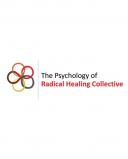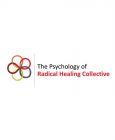Bias
Radical Existence in Times of Atrocities
Strategies to reclaim, affirm, and embrace our humanity.
Posted August 14, 2019

By Hector Y. Adames, Nayeli Y. Chavez-Dueñas, Helen A. Neville, Della V. Mosley, Grace A. Chen, Jioni A. Lewis, & Bryana H. French, The Psychology of Radical Healing Collective
“We refuse to let people deny what we see and what we know to negate racism...We cannot be cool, calm, and detached. We must affirm our own humanity and each other’s” (Neville, 2019).
We are arguably living in one of the most anti-immigrant, racist, and nativist periods in contemporary U.S. history. In recent weeks, fears of detention, deportation, family separation, and gun violence have not been the only worries that immigrants and people of color have had to contend with. Many immigrants and communities of color are also fearful for their lives and those of their loved ones. The racially targeted massacre of Mexican people in El Paso, Texas and the mass shooting carried out in Dayton, Ohio, serve as a reminder of how dangerous it has always been to be a person of color in the U.S.
These fears are exacerbated by the current administration’s repeated use of racially offensive and inflammatory language such as “Hispanic invasion,” “infestation,” and phrases like “go back to where you came from,” when referring to people of color. Just this week, the current U.S. administration announced a “Public Charge Rule” designed to reject residency to immigrants who have used public assistance. In addition, access to basic necessities such as healthcare, housing, and food assistance have been threatened by de-funding social programs.
The dehumanizing impact of systemic racism, ethnocentrism, and nativism, coupled with the rhetoric and actions of the federal government have dire consequences for communities of color and other marginalized groups. Beginning even before they are born, the effects of racism have dire consequences for children of color. To illustrate, a recent study found that while depressive symptoms for Latinx children are often higher than average, the severity of symptoms increases for children who have family members arrested for immigration-related matters.
Moreover, research has shown that exposure to chronic stress due to racial discrimination has been associated with a host of physical symptoms and illnesses throughout the lifespan including obesity, high blood pressure, cardiovascular disease, and decreased immune response (see references below to learn more). Indeed, draconian policies and racist rhetoric are harmful to our health, making us sick, and literally killing us. The antidote to the system of racial inequity and hatred is for communities of color to unite and come together as one.
Reclaiming, Affirming, and Embracing Our Roots
Communities of color in the U.S. come from a long legacy of remarkably advanced and resilient civilizations that are rich in racial and cultural diversity. Throughout the centuries, communities of color have fought to reclaim, embrace, and celebrate their racial and ethnic roots. As in the past, today’s struggle for people of color continues to be finding antidotes to the poison of white supremacy, systemic oppression, and toxic stress. Hence, the time is now for communities of color to create strategies to reclaim, affirm, and embrace our humanity and our voices. To this end, we describe three important steps that individuals and communities of color can take to move towards wellness during this tumultuous period in history: (1) Reclaiming the voices of our ancestors; (2) Affirming our cultural roots; and (3) Embracing liberatory love for each other and our communities.
Step 1: Reclaiming the Voices of our Ancestors
The challenges facing communities of color today are not new. Racism, hatred, and xenophobia are a part of the foundation of America’s fabric. Thus, it is imperative for people of color to look back to those who came before us and reclaim their stories, methods of survival, forms of healing, strategies of resistance, and ways of thriving. In psychology, some therapists use stories as a technique (bibliotherapy) to help people with the challenges they are facing. We recommend reading stories and poetry, listening to spoken word, and basking in lyrics that speak to the stories of survival and triumph of our elders of color as a way to reaffirm and own our past.
One way communities of color have passed their stories of joy and resistance is through the use of music and their lyrics. In contemporary times, communities of color utilize the same mechanism with new rhythms. For instance, the youth of color express their experiences, challenges, and triumphs through the use of hip-hop, reggaeton, and other forms of art (Elligan, 2004; Molina, 2015; Tyson, 2002). The use of storytelling which reminds us of the ways our ancestors survived, healed, resisted, and thrived can provide counternarratives to the endless ways people of color are dehumanized. Undeniably, our ancestors and communities have shown us that white supremacy can take a lot of things from us, but it will never be able to kill our joy, our zest for life, and our determination to fight for those in future generations.
Step 2: Affirming Our Cultural Roots
People of color are bombarded with messages that our histories do not matter. This is not accidental. Aspects of our histories are suppressed, ignored, and written in ways that portray individuals from our communities as uncivilized savages who made no contribution to the world’s advancement. Contrary to these damaging descriptions, the history of communities of color demonstrates that we are descendants of some of the most prosperous, advanced, and rich cultures such as the Aztec, Maya, Inka, Caribs, Kemet, Comanches, Apaches, Kush, India, China, and Mesopotamia.
Our people were brilliant mathematicians, astronomers, architects, prodigious artists, cooks, dancers, and composers. Our communities invented concepts and ideas that have benefited humanity as a whole and advanced our understanding of health, climate change, and spirituality. Hence, it is imperative to teach children and youth that they carry in their bloodline the legacy of incredibly beautiful, resilient, and determined people whose strengths and wisdom will allow them to survive and thrive despite racism and oppression (Adames & Chavez-Dueñas, 2017). To this end, it is critical to not isolate. Instead, we must nurture our strong, rich, and textured cultural roots. The system of white supremacy is meant to insulate us from the rich cultural traditions that have carried us through tumultuous times.
Connecting and embracing our cultural roots is a part of developing a positive ethnic-racial identity which is associated with increased well-being (Rivas-Drake & Umaña-Taylor, 2019). Reaching out to people we trust, who will listen to us and validate, respect, and celebrate our cultural roots can help us to connect, heal, and experience joy while being proud of who we are and where we come from.
Step 3: Embracing Liberatory Love for Each Other and Our Communities
Reclaiming our ancestors’ voices and embracing our cultural roots is important but it is not radical. The work is incomplete if we don’t create radical ways to affirm our collective humanity. The system of white supremacy thrives on division, silencing, and fear. It often makes us believe that the problems that our individual communities face are unique and different from those experienced by other communities of color. When in reality the problems all stem from the same sources; that is, a legacy of colonization, racial hatred, exploitation, and dehumanization. Thus, it is pivotal for communities of color to unite and come together as one.
Some beginning steps include learning about and reclaiming each other’s ancestors’ stories and embracing each other’s rich, resilient, and vibrant cultures. Recently, The Psychology of Radical Healing Collective developed a document with resources which include videos, readings, and activities designed to (a) integrate a strength-based approach to healing, (b) honor cultural traditions, (c) encourages critical thinking about the systems that shape the lives of people of color, and (d) motivate and support people of color and Indigenous individuals to take actions that celebrate life and optimize one’s sense of agency (French, Lewis, Mosley, Adames, Chavez-Dueñas, Chen, Neville, & Adam, 2019).
United as One Voice as a Form of Radical Existence
These difficult times call for unity, collaboration, and solidarity among communities of color. Indeed, we are stronger together! “Our lands’ voices, our pain, and our histories have spoken” (Marcos, 2001, p. 49). Only together, can we transform hate and despair into wisdom, strength, and unstoppable liberatory love for each other and our communities.
References
Adames, H. Y., & Chavez-Dueñas, N. Y. (2017). Cultural foundations and interventions in Latino/a mental health: History, theory, and within group differences. New York, NY: Routledge.
Adames, H. Y., & Chavez-Dueñas, N. Y. (2019). No health without mental health: No advancement in health without systemic change. Chicago, IL: The Chicago School of Professional Psychology.
Brondolo, E., Rieppi, R., Kelly, K., & Gerin, W. (2003). Perceived racism and blood pressure: A review of the literature and conceptual and methodological critique. Annals of Behavioral Medicine, 25(1), 55-65.
Chavez-Dueñas, N. Y., Adames, H. Y., Perez-Chavez, J., & Salas, S. P. (2019). Healing ethno-racial trauma in Latinx immigrant communities: Cultivating hope, resistance, and action. American Psychologist, 74(1), 49-62. http://dx.doi.org/10.1037/amp0000289
Elligan, D. (2004). Rap therapy: A practical guide for communicating with youth and young adults through Rap music. Kensington Books.
French, B. H., Lewis, J. A., Mosley, D. V., Adames, H. Y., Chavez-Dueñas, N. Y., Chen, G. A., & Neville, H. A. (2019). Toward a Psychological Framework of Radical Healing in Communities of Color. The Counseling Psychologist. https://doi.org/10.1177/0011000019843506
French, B. H., Lewis, J. A., Mosley, D. V., Adames, H. Y., Chavez-Dueñas, N. Y., Chen, G. A., Neville, H. A., & Adam, A. (2019). Psychology of radical healing syllabus. Retrieved from https://drive.google.com/file/d/1tONPKgCK9Js8vEOzzGvf9FS7jZjTvuRu/view
Gregory, R. J., Schwer Canning, S., Lee, T. W., & Wise, J. C. (2004). Cognitive bibliotherapy for depression: A meta-analysis. Professional Psychology: Research and Practice, 35(3), 275-280. http://dx.doi.org/10.1037/0735-7028.35.3.275
Hunte, H. E., & Williams, D. R., (2009). The association between perceived discrimination and obesity in a population-based multiracial and multiethnic adult sample. American Journal of Public Health, 99(1), 1285-1292.
Marcos, S. (2001). Our word is our weapon: Selected writings. New York, NY: Seven Stories Press.
Molina, M. (2015). Calle 13: Reggaeton, politics, and protest. Journal of Law & Policy, 46, 117- 147.
Neville, H.A. (2019). Do the right thing: My journey to use psychological science to promote racial justice. Best in Science Award Invited Address, presented at the 127th convention of the American Psychological Association. Chicago, IL.
Rivas-Drake, D. & Umaña-Taylor, A. (2019). Below the Surface: Talking with teens about race, ethnicity, and identity. Princeton, NJ: Princeton University Press.
Szanton, S. L., Rifkind, J. M., Mohanty, J. G., Miller, Thorpe, R. J., Nagababu, E., Epel, E. S., et al., (2012). Racial discrimination is associated with a measure of red blood cell oxidative stress: A potential pathway for racial health disparities. International Journal of Behavioral Medicine 19(1), 489-495.
Tyson, E. H. (2002). Hip hop therapy: An exploratory study of a rap music intervention with at-risk and delinquent youth. Journal of Poetry Therapy, 15(3), 131-144.




